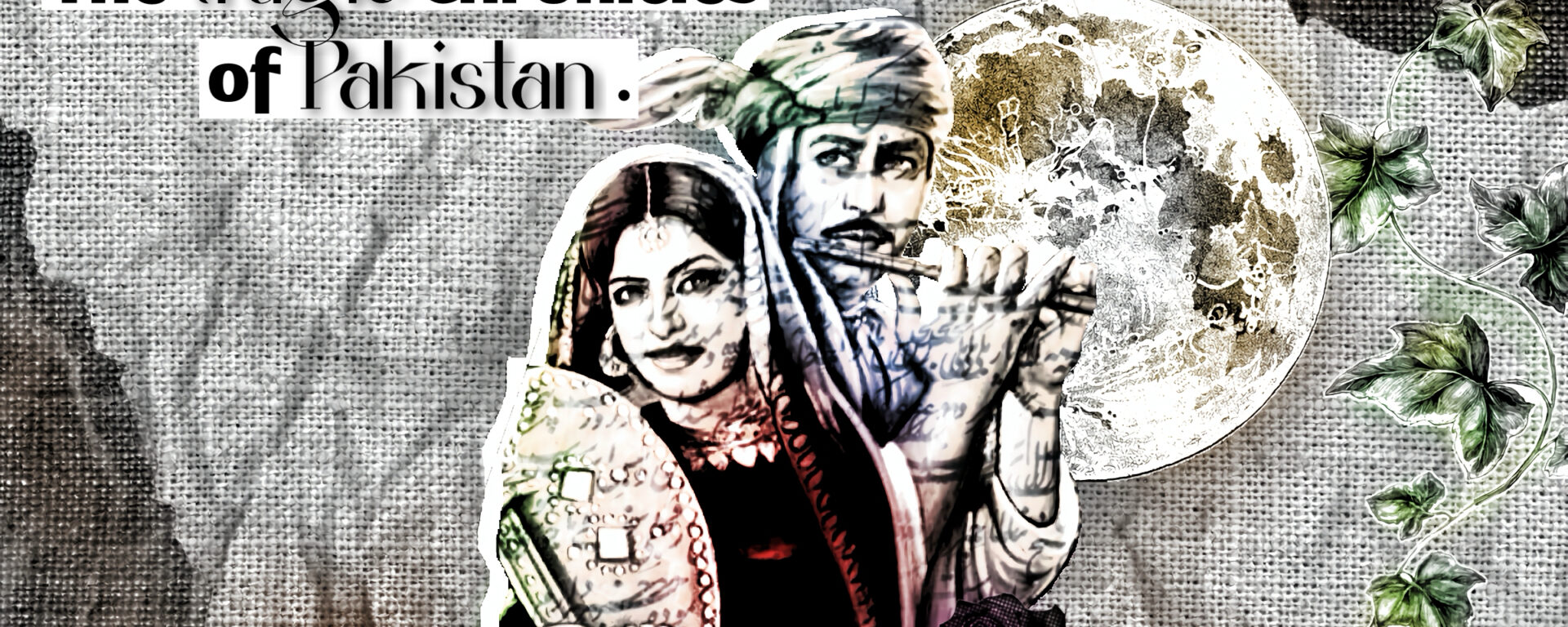Long before modern romance stories graced our screens and bookstores, the nation of Pakistan was awash with romances that defied social norms and touched the soul.
Everyone reveres Shakespeare as the literary god of tragedy, and stories like Romeo and Juliet cement his legacy as the ultimate storyteller of doomed love. But hold on to that thought—because when it comes to heartbreak, rebellion, and sacrifice, the tragic love stories of Pakistani folklore can give the Bard a run for his money. From the beautiful fields of Punjab to the endless deserts of Sindhu, the love of Heer Ranjha and Sassi Punnu still resonates with timeless themes of rebellion, sacrifice, and heartbreak. These are not the usual delights; a gripping love story that dared to challenge the world, leaving a legacy that continues to delight us to this day.
Heer Ranjha: a love that challenged the world
Set in the fertile valleys of Punjab, Heer Ranjha is one of the most moving and emotional love stories in Pakistani tradition. Heer, a natural beauty, falls deeply in love with Ranjha, a handsome flute player who has come to her village after leaving her home. Their romance blossoms, but social norms and family values ??are at stake.
Forced into an unwanted marriage, Heer is separated from Ranjha, who has become a wandering fool, clinging to the hope of seeing her again. After overcoming many trials, the lovers are reunited, but tragedy strikes when Heer’s family poisons her before their wedding. Ranjha is distracted and chooses the moment their love ends in death, living as a tale of rebellion and sacrifice. Even today, the story of Heer and Ranjha is etched into the cultural fabric of Punjab, sung in folk songs and celebrated as a tale of love that dared to stand against the world.
Sassi and Punnu: A love lost in the sands of a desert
Far from Punjab’s green fields, in the arid deserts of Sindh and Balochistan, another love story unfolded—a tale of devotion as boundless as the sands that stretched into the horizon. Sassi, a royalty abandoned at birth, was raised humbly by a washerwoman. Her beauty and grace won the heart of Punnu, the Prince of Balochistan, who left his kingdom to live with her.
Their love angered Punnu’s family. One night, they drugged her and took her away, leaving Sassi heartbroken. Determined to find her, he braved the scorching desert, his undying love guiding his journey. However, the harsh conditions took their toll, and legend has it that the world was destroyed. Punnu, having fled, found her body and wept, and the desert sands became his eternal resting place and a testament to his undying love. The whispering winds of Sindh still carry their names, reminding us of a love that refused to surrender, even to the harshest of fates.
Themes that unite these tales
In essence, the story of Heer Ranjha and Sassi Punnu is not just about love—it is about rebellion, sacrifice, and the power of human emotion. These stories, though geographically separated, share a common thread: love as rebellion. Whether Heer defies her family’s powerful feudal honor or Sassi braves the unforgiving desert for her prince, these characters demonstrate a love that refuses to bend to societal norms.
Another powerful theme is sacrifice—but sacrifice that does not guarantee a happy ending. While Heer and Ranjha sacrifice their lives to be together, Sassi risks it all, walking barefoot in the hot desert with no hope of saving his journey. These stories remind us that true love often requires courage and the will to persevere through thick and thin, even when the cost is painful.
Finally, the human spirit is waging a global struggle against the constraints of society. These stories reveal a timeless truth: the purest of emotions—love—can be shattered by human expectations, family honor, and strict conventions. But the beauty is that these lovers refused to give up, leaving behind stories that challenge us to question the rules that limit love.
Why these tales still resonate today
Why do these stories still haunt us, centuries later? Because the feelings and issues they talk about are just as relevant now as they were then. Sure, we may not be wandering in the desert or playing the flute in mustard fields, but modern love still has its challenges — whether it’s long-distance relationships, cultural differences, or societal pressure to “marry the right person.”
In many ways, these stories remind us that love is universal, but the obstacles it faces are built up over time. Heer and Ranjha’s struggles with feudal honor reflect present-day issues and family expectations, while Sassi’s determination resonates with anyone struggling with the failure of their beliefs.
Furthermore, these stories also have a poetic depth that draws us to read them. Who wouldn’t be moved by the image of a heartbroken girl bravely crossing the desert, every step testifying her love? Or the wandering lover playing his flute and his heavy heart pouring into his song? These stories make us feel deeply, to imagine a love where the souls meet before the eyes.
Imagine these stories in the modern world. Heer and Ranjha could become a super couple on Instagram, sharing selfies with the same caption:
“Against all odds, #HeerRanjha.”
Armed with Google Maps and sunscreen, Sassi may have found Punnu in no time—but would their story still be as legendary, minus the crazy drama? Would Ranjha’s flute have the same appeal if it were played on a busy city street or shared on social media? In ancient Punjab, fields were not just landscapes, they were sacred places for forbidden love, where every glance and whisper defied tradition. Furthermore, the golden sands weren’t just sassi’s battlefield but rather reflected her deep devotion. Every swelling step mirrored her burning love for Punnu—a sacrifice no modern story could ever replicate. Could Sassi’s journey, in an air-conditioned car on modern highways, ever evoke the same sense of sacrifice and endurance?
These stories remind us that true love transcends time and space. The fields of Punjab and the deserts of Sindh are more than just a ‘setting’, they carry the voices of those who dared to dream, to rebel and to resist. As we live in the modern age where a “temporary fling” is considered the norm when it comes to romance, these characters remind us of the enduring power of love—a love so fierce and timeless that it refuses to fade even when it’s met with a tragic fate.
By Tanzeel Shahid
Writer (Team 2024-25)

